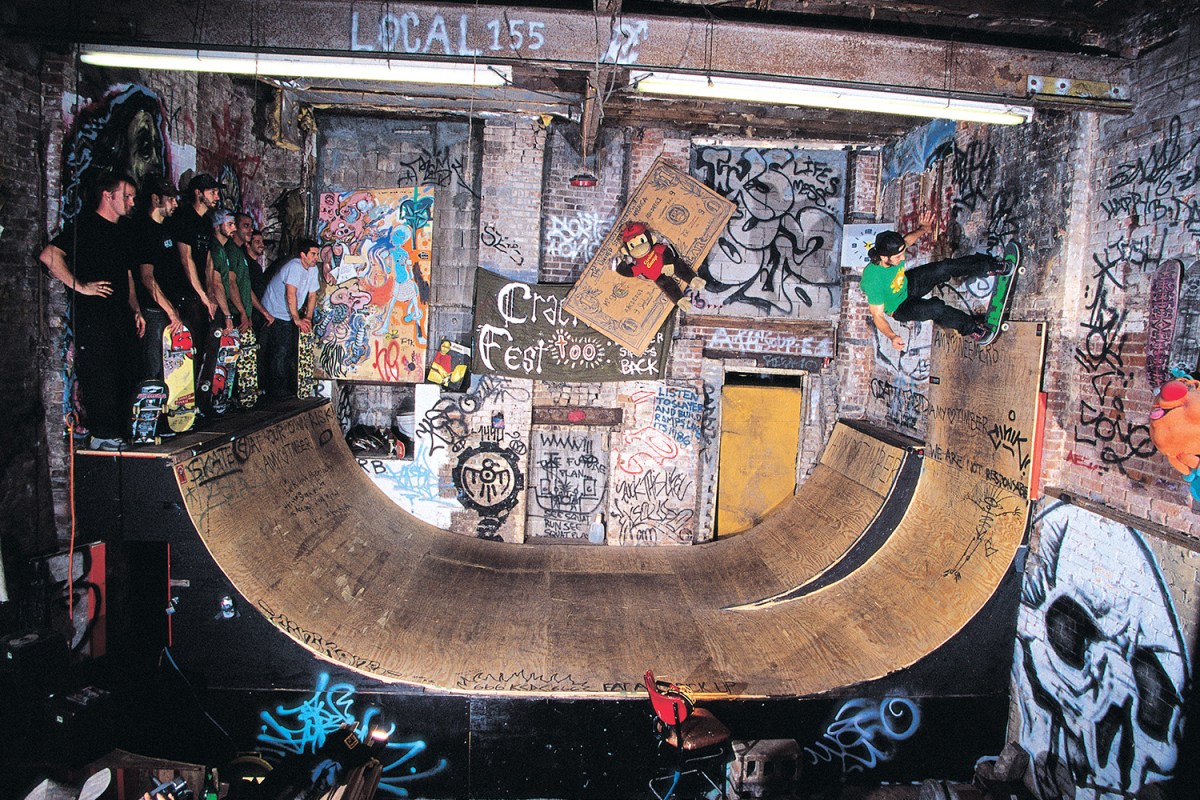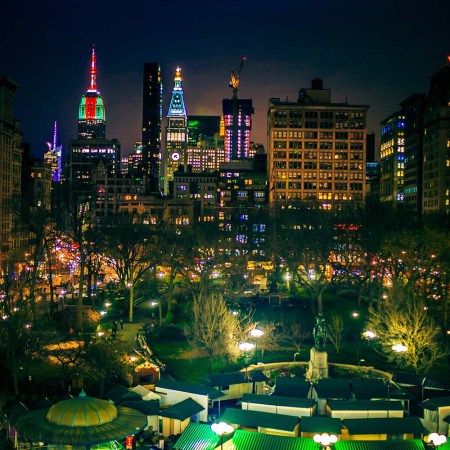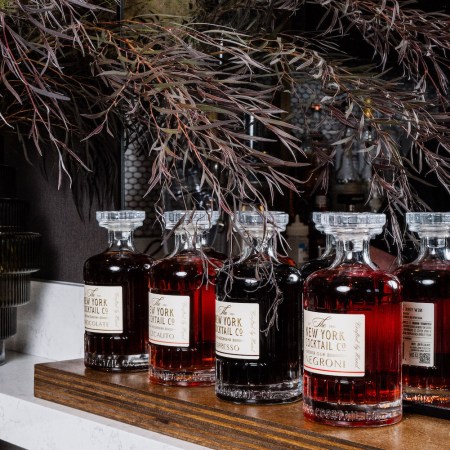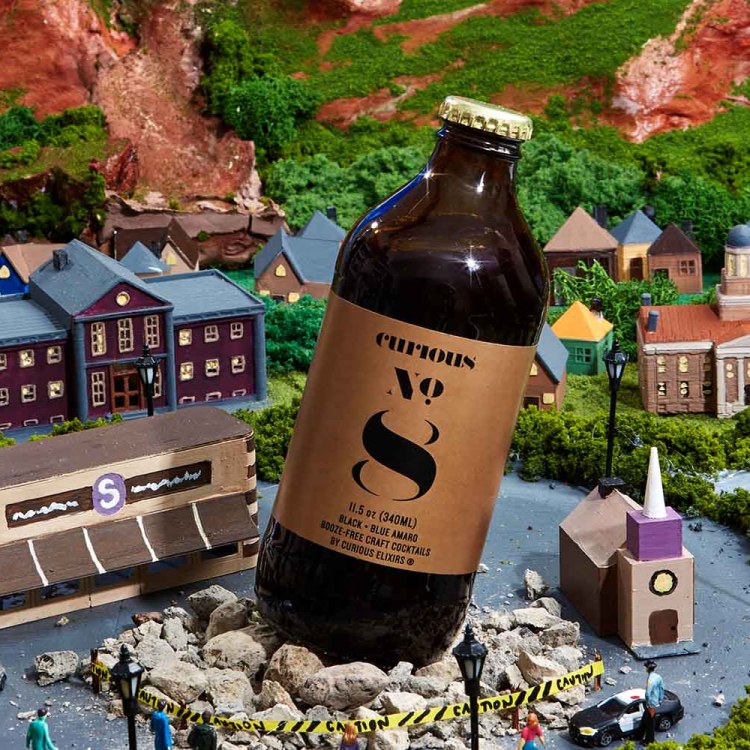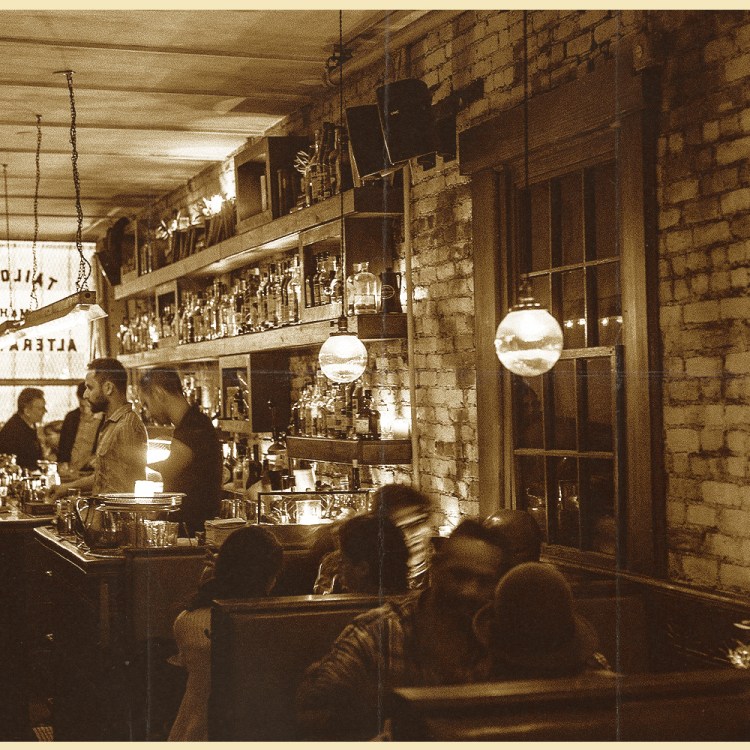Originally from Washington Heights, Alex Corporan began skating in 1986. Even decades later, having worked with brands like Supreme (he was one of the brand’s first store managers) and Etnies, he’d still get blank stares and bewilderment when he mentioned skating a particular pump on a New York street corner or a curve by the river. He wanted to explain what it was like being a skater in New York City to people outside of that world, and the written word never seemed to cut it. He set out to make a book with full-bleed photos that could at least begin to sum up what it meant to skate in New York City — that the city itself was their skatepark.
Corporan began working on Full Bleed in 2008, later joined by skaters and artists Ivory Serra and Andre Razo. It was first published in 2010 and known as “the Bible of New York skateboarding” by admirers, even getting praised in The New Yorker. It features decades of top-tier skate icons, from Mike Vallely and Harold Hunter to Andy Kessler and Bobby Puleo, not to mention photography from the likes of Spike Jonze, Larry Clark, Allen Ying and Angela Boatwright. Full Bleed’s 10th anniversary edition (delayed in part by the pandemic) arrives this month, featuring new voices in skateboarding and skate photography as well as a foreword by Tony Hawk.
InsideHook spoke to Alex Corporan about the new edition, and the old, pushing up to midtown, and the beauty of skating in New York City.
InsideHook: How did the original Full Bleed come to be?
I was skateboarding all my life, and it wasn’t cool back in the day. No one understood why we were doing it. We had no skate parks. I wanted to do a book with full-bleed photos and show how New York was our backdrop, our skatepark. So you’d be like, ‘Oh, wow, that’s amazing. I passed by that place every time. I didn’t know that you guys just skate there.’ On top of that, people didn’t understand why a photographer’s on the ground taking a photo of this kid not really landing something. People don’t understand it could be one try or 20 tries. Photography is my beloved besides skateboarding. I’m selecting these images for people to see not only our city, but why the city, the backdrop is so beautiful and why it was a great mashup.
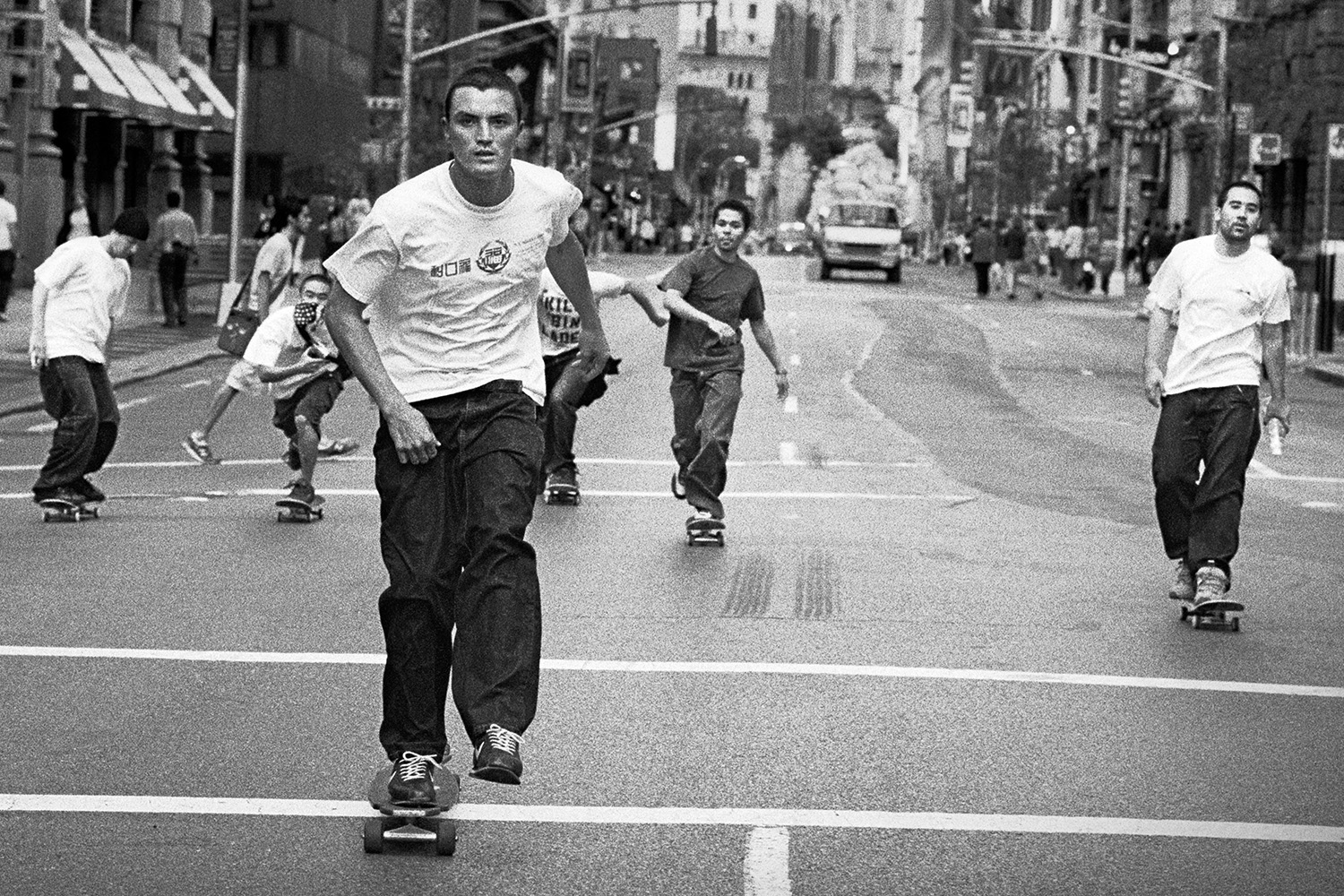
There is built into skateboarding this active imperfection. I love how that also presents itself in the pictures.
We got to fight the crack on the floor, people all around. New York City is so active. It’s not like LA, where you can be there all day, you won’t see a soul, you’ll only be there with your friends. In New York you have to battle the world: a car, a cyclist, some crazy homeless man, some old people walking super slow. You’re like, ‘Damn, I gotta wait for these two to walk through this place I want to skate at.’ When you look at the book, you see that energy is very powerful. The beauty of New York is finding the signs. If you don’t land it, you go back and you gotta wait for that timing again. Everything is not for you.
When the history of skateboarding is chronicled, it often seems like New York ends up second fiddle.
Always. When people come to New York, they’re like, ‘Wait, how the hell you guys doing this?’ We would skate all day, all the way from South Street Seaport to Midtown, then go out to the nightclub after that. Then maybe go skate after that. The energy level’s crazy high. We’ve exhausted so many people, so many giant pros from California. They’re like, what the fuck? And they’ll go back to their hotel room and won’t hang out with us for two days because they’re like, ‘dude, you wore me out.’ And we’re like, ‘no, we’re up. We got to do this again. Tomorrow. Nine o’clock in the morning, let’s go.’ All day, all night. New York is a very special place for skateboarding.
How do you think skating in New York has changed since you started and since the book first came out?
We were like the Colors of Benetton: Black, Spanish, Asian, white, all these kids. People didn’t understand how we were united like that. We looked like a pack of wolves. Then when I did the book in 2010, skateboarding started elevating to another new level. And right now in 2022, skateboarding’s so accepted around the world. The Olympics helped. The X Games helped. How we paved the way was insanity. Our own friends we grew up with, in junior high school, they were like, ‘what are you doing, psychopath?’ Now these are the same guys or girls that are like, ‘hey, can you get my son to skateboard, can you hook it up?’ It went from being like the dirtbags on Earth to people looking up to us. We went through it. Not everyone was cool then and now it’s cool. That’s what the book shows. I want to give an ode to skateboarding because like skateboarding is my love, my life. I want to make sure everyone’s appreciated. New York is an open game now because we have a crazy amount of skate parks and skateboarders. We have parents that actually support skateboarding, who skated back in the day getting nostalgic and skating with their kids. That’s the beauty of New York, you can skate anywhere. Back in the day we were hated on. Skate in midtown? Forget about it. People would look at you backwards.
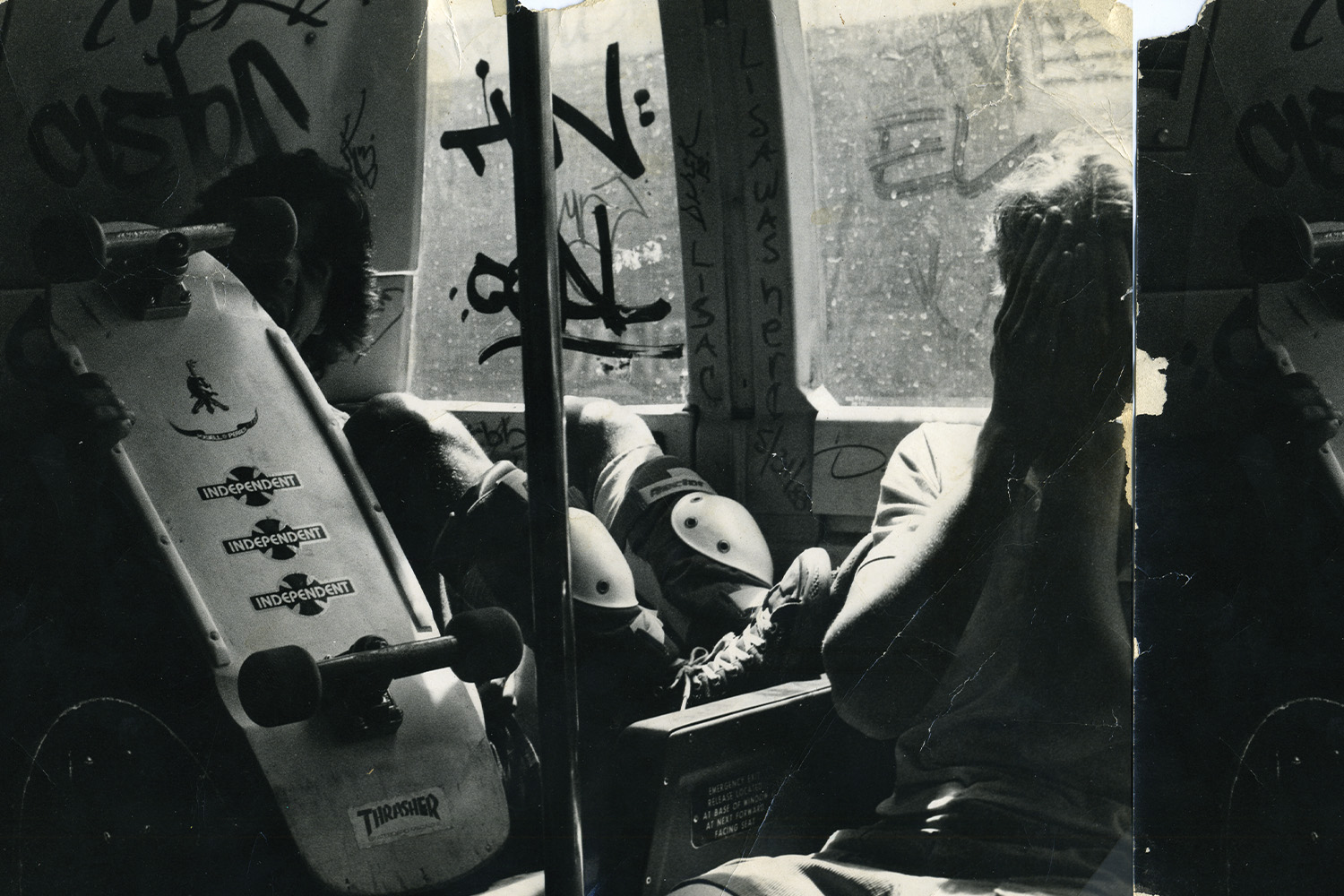
What made you want to do a 10th anniversary edition of the book, and how did you want it to be different?
I wanted to do the 10th anniversary because 10 years ago was a different time. Skateboarding just started evolving and being accepted. These new kids didn’t get to see the book because they were too young. And now that they can see it, they’re like ‘whoa, I can’t believe this is 10 years ago.’ I got told already this is like the Bible of New York skateboarding and that was the biggest compliment ever. I’m excited because kids get to see it now and parents can enjoy it with the kids. Parents are gonna be like, ‘Oh, this is so and so. And I remember this day, I can’t believe this photo’s here.’ It’s epic, you know? You’re not holding on to a magazine you can lose in the mix.
This edition was a 2.0., an upgrade. There’s newer photographers in it, the younger ones that are now the big photographers. I wanted to give them a chance to be in a book in a world that’s so different now: everyone’s doing Instagram and YouTube things. I wanted to give them a solid thing you can hold in your hand, something tangible: you’re a part of this with me, and we did this together. I want everyone to feel like they’re part of the family. The way I got Tony Hawk to do the forward is through Bruno Musso, who owned the first skateboard company in New York City called Shut Skates. If you read the foreword, you can tell Tony was like, ‘this place is gnarly’ when he was here back in ‘86. It’s pretty awesome, it’s pretty funny from the biggest pro on earth, the guy that pretty much molded what skateboarding is.
How do you think New York skate photography is different from images shot elsewhere?
New York has so many interesting things behind us. It’s a lot of grittiness, the reaction of people, the energy. If you look through the book, you’re gonna see little weird things because nothing is perfect. You see people staring, somebody walking. There’s so much going on in the photo, that you have to keep looking back at it. That’s the beauty of New York, there’s always something happening more than the subject. You might catch somebody picking their boogers and it’s in there. New York is the most interesting, beautiful place on earth because there’s this constant energy. Everything is moving. Something’s always happening. It’s always turned on.
This article was featured in the InsideHook NY newsletter. Sign up now for more from all five boroughs.
